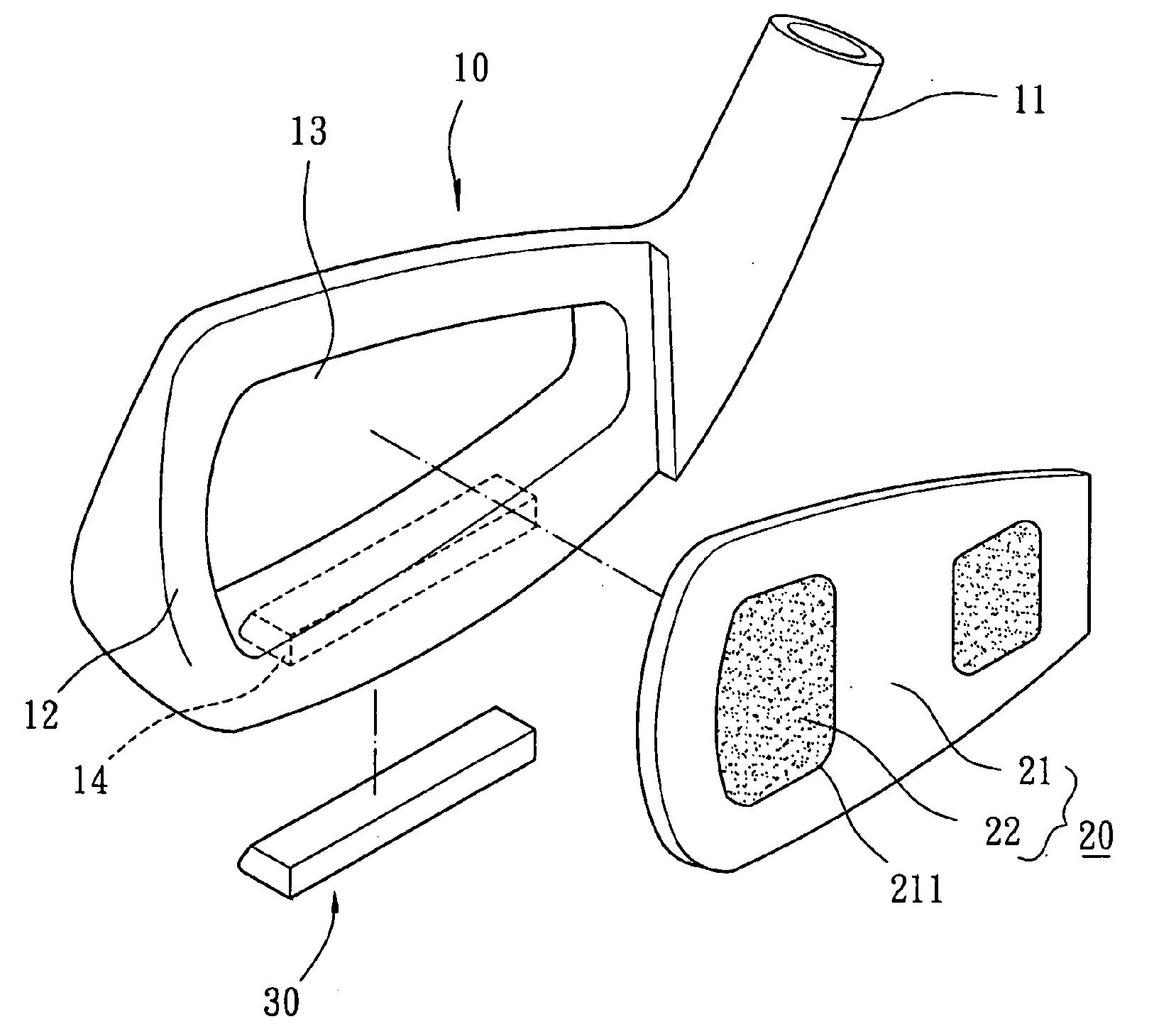IP Grab of the Week: Low Center of Gravity Club Head
Congratulations are in order; the “IP Grab of the Week” award goes to Nelson Precision Casting (again). NPC’s
The ‘965 application is directed to a lightweight metal matrix ball striking surface that reduces the forward weight of the club head thereby allowing more weight to be placed toward the rear of the head. Paragraph 37 of the application provides a good explanation of the purpose of the invention:
[0037] After assembly, the metal matrix 21 of the striking portion 20 reduces the weight of the front half portion of the whole golf club head, and the light, reinforcing members 22 further reduce the weight of the front half portion of the whole golf club head. Further, the weight of the rear bottom portion of the whole golf club head is increased, as the volume of the rear bottom portion of the body 10 is greater than that of the top portion of the body 10. In other words, the light, reinforcing members 22 reduce the weight of the striking portion 20 to the desired extent whereas the weight member 30 increases the weight of the rear bottom portion of the body 10 to the desired extent. This allows further downward shifting of the center of gravity of the iron club head to the maximum extent and improves the overall striking effect of the golf club head.
According to the application, the metal matrix preferably has a high elastomeric coefficient and incorporates a light reinforcing member. The application states:
Preferably, each light, reinforcing member 22 has a specific gravity smaller than that of the metal matrix 21 by at least 1.5 g/cm.sup.3, preferably 2.5 g/cm.sup.3. Preferably, each light, reinforcing member 22 is made of a material selected from a group consisting of aluminum, aluminum alloy, magnesium alloy, carbon fibers, Kevlar fibers (poly-p-phenylene terephthalamide sold by Dupont Inc. under the name Kevlar®), thermoplastic elastomers, rubber, polyurethane, polyolefin, epoxy, and other high molecular polymers. Each light, reinforcing member 22 may be directly formed in the associated groove 211 by injection molding. Alternatively, each light, reinforcing member 22 is preformed and then inserted into the associated groove 211 and bonded in place.

I would be interesting in knowing if this technology has been incorporated into a commercially available product. Congratulations on an aggressive patenting strategy!

Comments